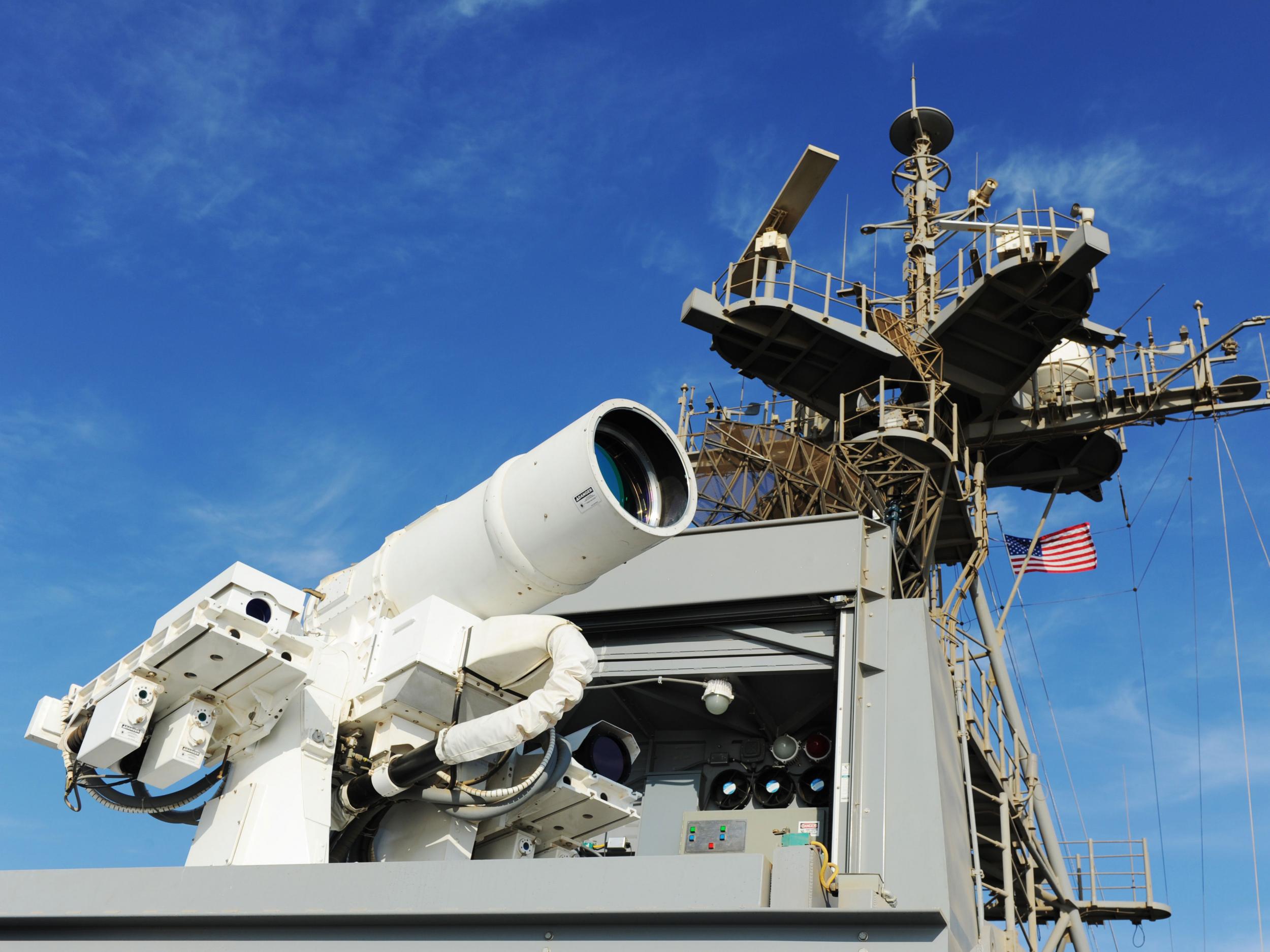US Army reveals plans to get laser weapons on the battlefield by 2023
The laser weapons would be able to shoot down artillery shells and missiles in flight

The US military is "very close" to developing laser weapons for use on the battlefield, an army official has revealed.
Speaking at a House of Representatives committee, military technology secretary Mary J. Miller said the army was aiming to have the weapons deployed as early as 2023.
Once developed, the weapons would be used to shoot down missiles, drones and even artillery shells as they move through the sky.
Before laser weapons can be used in battle, however, they'll need to go through stringent tests and trials so soldiers can get to grips with them.
Speaking to the committee, Miller said: "Lasers have been promised for a long time, but they've never held up and delivered what was asked for."
"So the operators are rightfully skeptical, which is why you see the [armed] services taking the lasers out in operational environments and letting them be used by operators so they can understand what the capabilities are," she said.

In the meantime, less-powerful laser weapons will be rolled out "relatively soon," so members of the military can gain some experience before using the more deadly weapons.
Some laser weapons have been tested before, and the technology is already in use in some branches of the American armed forces.
Also speaking at the committee, Dr David Walker, a US Air Force technology official, said American planes equipped with lasers were flying "every day," using them as "infrared countermeasure systems" designed to protect against incoming missiles.
Offensive laser weapons are less widespread. One ship-mounted laser gun, tested in 2014, is capable of destroying speedboats and small drones in the blink of an eye with a high-energy burst of light. Projects to develop similar weapons for ground troops and aircraft are already underway.
Part of the military's attraction to laser weapons is their low cost. While the systems may take millions to develop, a single shot on the battlefield would cost around £1, according to Popular Science - far less than the price of a single missile, which can stretch into the tens of thousands of pounds.
If laser weapons make it into the theatre of war in the 2020s, they'll only target incoming projectiles or unmanned vehicles for the forseeable future, since the use of directed energy or blinding laser weapons against people is restricted by the Geneva Conventions.
Join our commenting forum
Join thought-provoking conversations, follow other Independent readers and see their replies
Comments